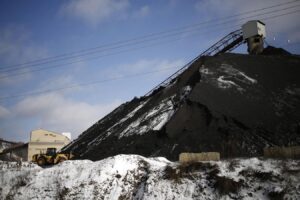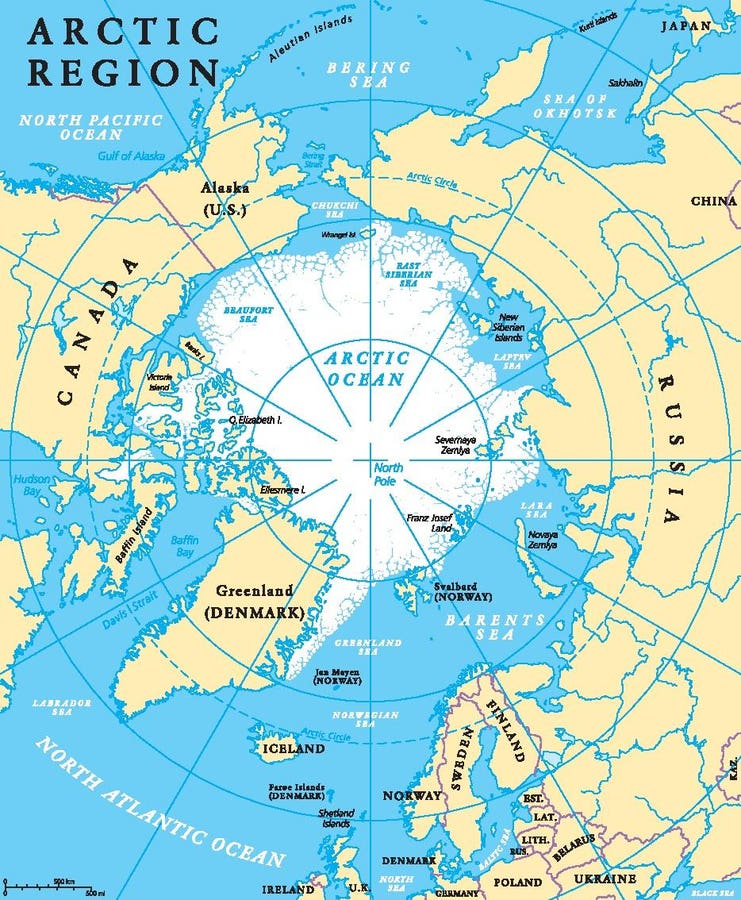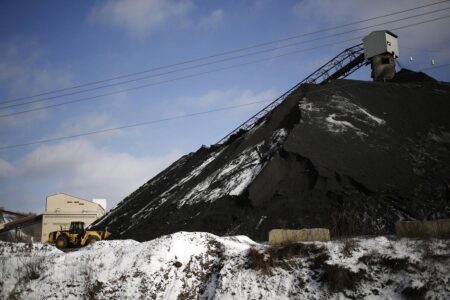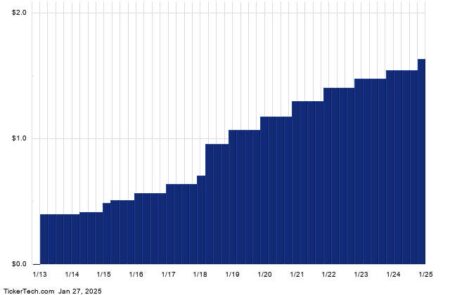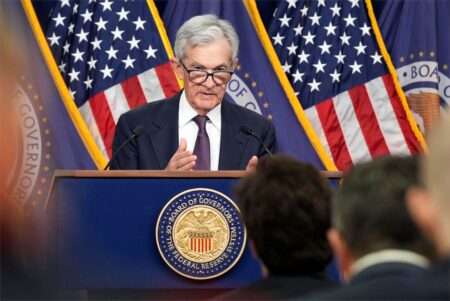When President Donald Trump returned to the White House last week, many expected him to target China or address border security with Mexico. Instead, Trump surprised the world by reiterating his plan to expand U.S. territory by acquiring Greenland from Denmark and incorporating Canada as the 51st state. This agenda has naturally drawn criticism from allies, many of whom view it is unfeasible. While Trump’s aggressive approach and bombastic rhetoric may be quickly dismissed, it is worth understanding why the United States is expressing such bold geopolitical ambitions. The reasons are a compilation of economics, national security, and global power.
Canada As The 51st State?
Canada’s vast 9.98 million square kilometers makes it the second-largest country globally and a natural extension of U.S. territory from a geographical perspective. The two nations already share the longest undefended border in the world, but Trump has described this boundary as an artificially drawn line that hinders economic integration and security cooperation.
Economically, Canada is America’s second-largest trading partner and number one export market. Trade is governed by the Canada-United States-Mexico Agreement, signed by the first Trump administration. TD Bank estimates the U.S. is on track to record a trade deficit with Canada of roughly US$45 billion in 2024, which is just 5% of the U.S. overall trade deficit. When Canadian energy exports are stripped out, the trade deficit becomes positive: in 2023, 78% of all Canadian production went to the U.S., and 60% of all U.S. crude oil imports came from Canada. Therefore, energy is a huge part of trade between the two countries. However, given the relatively small share of the overall deficits and the fact that U.S. energy production continues to grow, there are likely other motivations for wanting to make Canada the 51st state.
Trump argues that annexation would eliminate trade barriers, streamline resource extraction, and strengthen North American energy independence relative to the rest of the world. However, national and economic security interests are a bigger motivation.
Control over the border is one issue. For example, Trump has expressed concerns about the flow of fentanyl and illegal immigrants across the U.S.-Canada border. Integrating the two nations would enhance border security. Resource control is another issue. The Trump administration sees access to Canada’s large store of natural resources, including oil, minerals, and freshwater, as vital for U.S. economic security.
The main prize would be the Arctic. Nearly 40 percent of Canada’s land mass is considered Arctic. By integrating Canada, the U.S. could strengthen its dominance in global trade and Arctic geopolitics. This move would counterbalance the growing Russian and Chinese presence in the Arctic while securing control over critical shipping routes.
As one might suspect, Canada is not too receptive to President Trump’s overtures. Canadian officials have been quick to reject the idea of annexation. Public sentiment also aligns with this stance; an Angus Reid poll conducted in early January found only 10% of Canadians support a political integration with the United States.
Trump is most likely aware that making Canada the 51st state is a long shot. However, his aggressive tactics, which threaten the relationship between the two countries in the short run, could result in a negotiated deal that would allow more integration rather than less.
Greenland: A Strategic Arctic Asset
Greenland, an autonomous region of Denmark, is the world’s largest island, spanning 2.16 million square kilometers. It is sparsely populated with just 56,916 residents.
Similar to Canada, Greenland’s proximity to important Arctic shipping lanes makes it a geopolitical asset. The island also hosts Pituffik Space Base, a key U.S. military installation used for missile defense and surveillance operations.
Economically, Greenland is rich in untapped rare earth elements such as dysprosium, neodymium, europium, and yttrium—critical materials for AI hardware, quantum computing technologies, renewable energy systems, and advanced defense equipment. The Tanbreez project alone contains an estimated 28 million tonnes of rare earth oxides, nearly 30% being heavy rare earth elements. These resources could significantly reduce U.S. reliance on China, which currently controls over 80% of global rare earth element production.
The U.S. appears quite serious about gaining control of Greenland, or at minimum, achieving a much closer economic and political alliance. “This is not just about Greenland,” National Security Adviser Mike Waltz told Fox News host Jesse Watters on January 8 this year. “This is about the Arctic. You have Russia that is trying to become king. This is about critical minerals, this is about natural resources.It’s oil and gas. It’s our national security. It’s critical minerals.”
Like Canada, Denmark has fiercely opposed Trump’s ambitions to acquire Greenland. Danish Prime Minister Mette Frederiksen reiterated on January 7 that “Greenland is not for sale,” emphasizing that U.S.-Danish relations must remain respectful of Greenlandic sovereignty. Greenland’s Prime Minister Múte Egede shared this sentiment but acknowledged Greenland’s need to work closely with the United States on defense and natural resources. “The reality is we are going to work with the U.S.—yesterday, today, and tomorrow,” Egede said during a press conference in Nuuk. Independence from Denmark is a topical issue leading up to elections in Greenland this April, and the costs and benefits of a closer post-independence relationship with the U.S. will surely be a point of discussion.
This is not the first time the U.S. has expressed an interest in Greenland. In 1946, officials offered Denmark $100 million in gold bars for Greenland. At the time, U.S. officials thought it was a “military necessity.”
The Geopolitical Importance Of The Arctic
The Arctic has become a focal point of global competition due to its abundance of natural resources, emerging shipping routes, and strategic military significance. The region contains an estimated 13% of undiscovered global oil reserves and 30% of natural gas reserves. As mentioned above, critical rare earth elements are also abundant in the Arctic region.
The melting of Arctic ice caps is opening new maritime shipping routes, including Canada’s Northwest Passage and Russia’s Northern Sea Route. These pathways could significantly shorten shipping time by 30%-50% between Asia, Europe, and North America. Control over these routes would provide an economic and political advantage to the U.S.
The Arctic has significant military importance, intersecting North America, Europe and Eurasia. The U.S. military has a presence in Greenland, but so does its adversaries. Russia, which controls 53% of the Arctic coastline, has heavily militarized its territories with airbases and naval forces, while China has declared itself a “near-Arctic state” to justify its growing investments in Greenland’s mining sector. It also holds substantial stakes in major Russian Arctic LNG projects. By acquiring Canada and Greenland, the United States would secure dominance over these resources and routes while countering Russian and Chinese ambitions.
What If Trump Doesn’t Get His Way?
If Denmark and Canada continue to resist Trump’s territorial ambitions, he has hinted at using economic pressure or even military force as leverage. For Denmark, Trump has threatened high tariffs on Danish exports if they refuse to sell Greenland.
For Canada, Trump could impose punitive tariffs or renegotiate trade agreements to increase economic pressure—a tactic he has previously employed against other trading partners like Mexico and China. Canada is already on alert for a potential 25% tariff on all exports to the U.S. coming as soon as February 1.
These measures align with Trump’s transactional approach to diplomacy but risk alienating long-time allies like Denmark and Canada while destabilizing existing international relationships. The truth is nobody knows the next move on the geopolitical chess board.
Implications Of A Unified U.S., Canada, and Greenland
If Trump succeeds in integrating these territories into the United States, it would fundamentally reshape global geopolitics. The combined landmass would total approximately 21,553,522 square kilometers, making it the world’s largest country. This new entity would surpass Russia by over 4 million square kilometers and dwarf China’s land area of 9.6 million square kilometers.
Economically, control over Arctic resources brought by a unification would leverage the United States in global energy markets while securing a technological edge through access to rare earth elements critical for AI growth and advancements in quantum computing.
Although these scenarios may seem unlikely, given legal hurdles and strong resistance from Denmark and Canada, they highlight the Trump administration’s broader ambition to use U.S. power to redefine America’s role on the global stage. The desire to annex Canada and Greenland reflects U.S. policy goals to enhance economic and national security. This new approach may be brash and bold, but the geopolitical agenda has strategic merit for the United States.
Read the full article here






